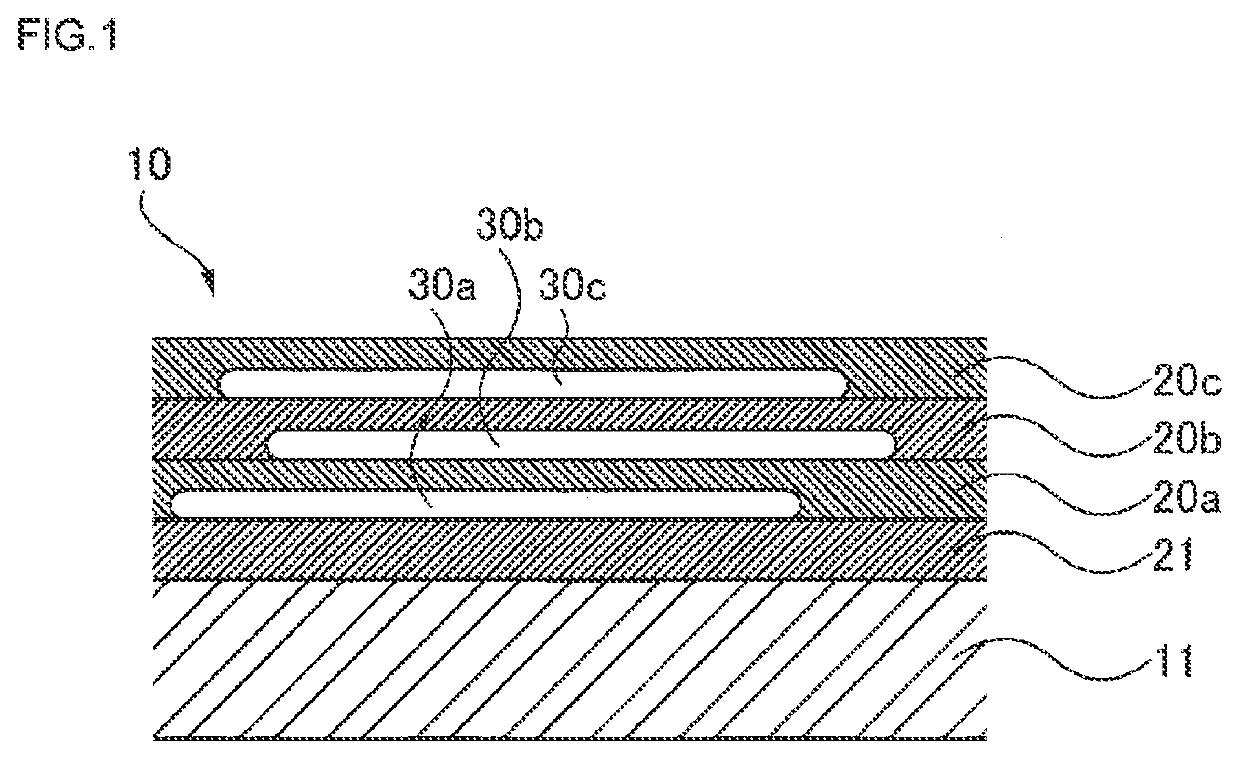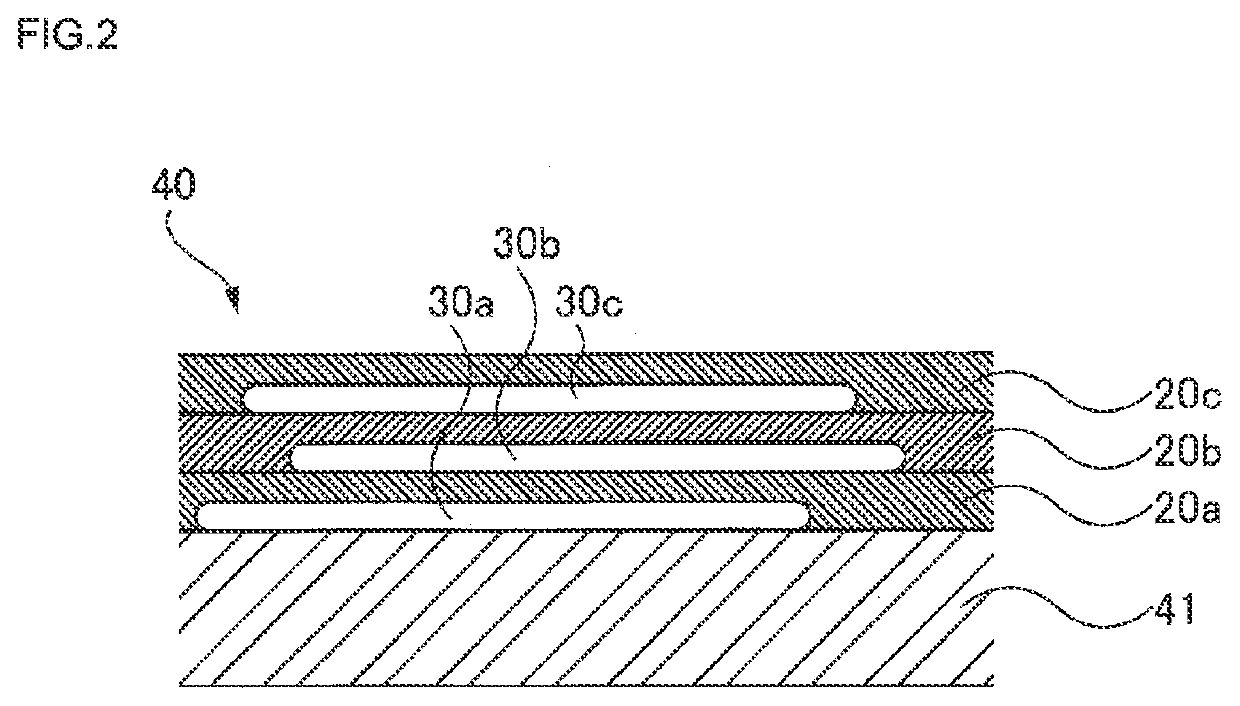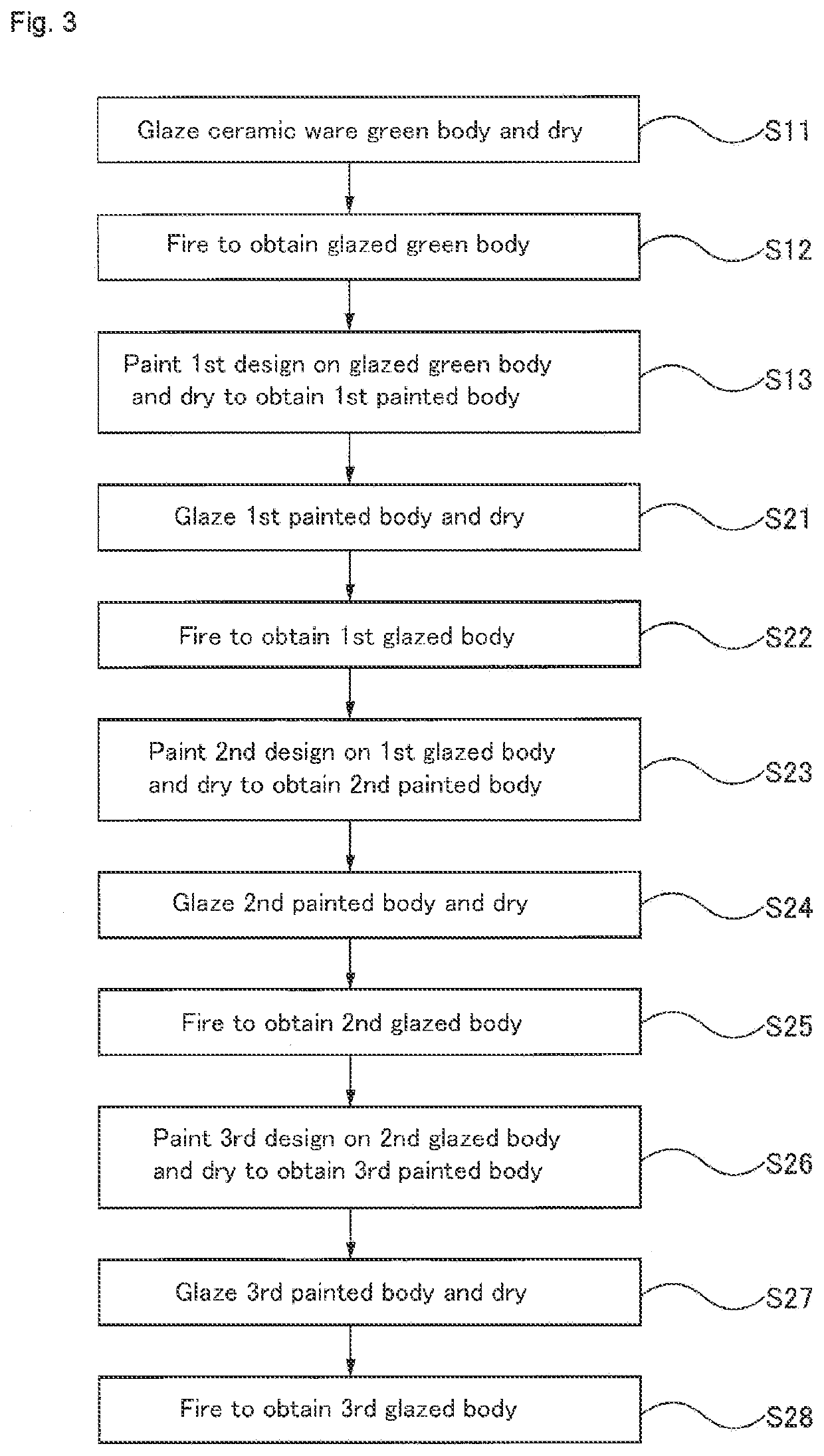Water-based paint, ceramics, and method of decoration
a technology of water-based paint and ceramics, applied in the field of water-based paint, ceramics, and a method of decoration, can solve the problems of uneven coating of products, difficulty in completing decoration work, lack of sensuousness, etc., and achieve the effects of reducing color irregularities and uneven coating, excellent adhesion, and easy dissolution into glaz
- Summary
- Abstract
- Description
- Claims
- Application Information
AI Technical Summary
Benefits of technology
Problems solved by technology
Method used
Image
Examples
example 1
[0174]Paint was prepared by mixing 1.0 g of pigment (Green M-142), 0.8 g of cellulose nanofibers (bleached mechanical pulp product) (3% by weight aqueous dispersion), and 0.2 g of cellulose nanofibers (bleached hardwood pulp product, high viscosity CNF) (2% by weight aqueous dispersion), which was taken as Example 1. With regard to the cellulose nanofibers, the bleached mechanical pulp product was beaten in a Niagara beater or a single disk refiner until 80% or more of the product was fine fibers, to obtain a processed material, which was then circulated in a high-pressure homogenizer three to ten times for making the material finer, to thereby obtain first cellulose nanofibers having an average fiber width of 50 nm, a water retention of 243%, a lignin content of 30.9%, and a B-type viscosity of 590 cps. Second cellulose nanofibers have an average fiber width of 31 nm, a water retention of 355%, a lignin content of 1.8%, and a B-type viscosity of 2700 cps.
example 2
[0175]Paint was prepared by mixing 1.0 g of pigment (Green M-142, NITTO GANRYO KOGYO CO., LTD.), 0.9 g of cellulose nanofibers (bleached mechanical pulp product) (3% by weight aqueous dispersion), 0.1 g of cellulose nanofibers, which had been obtained by phosphorous-esterification of a bleached hardwood pulp product, and had an average fiber width of 3 to 4 nm, and a B-type viscosity of 19000 cps (phosphorous-esterified, high viscosity CNF) (1% by weight aqueous dispersion), which was taken as Example 2.
example 3
[0176]Paint was prepared by mixing 1.0 g of pigment (Green M-142, NITTO GANRYO KOGYO CO., LTD.), 0.8 g of cellulose nanofibers (bleached mechanical pulp product) (3% by weight aqueous dispersion), 0.2 g of cellulose nanofibers, which had been obtained by phosphorous-esterification of a bleached hardwood pulp product, and had an average fiber width of 3 to 4 nm, and a B-type viscosity of 19000 cps (phosphorous-esterified, high viscosity CNF) (1% by weight aqueous dispersion), which was taken as Example 3.
PUM
| Property | Measurement | Unit |
|---|---|---|
| temperature | aaaaa | aaaaa |
| particle size | aaaaa | aaaaa |
| particle size | aaaaa | aaaaa |
Abstract
Description
Claims
Application Information
 Login to View More
Login to View More - R&D
- Intellectual Property
- Life Sciences
- Materials
- Tech Scout
- Unparalleled Data Quality
- Higher Quality Content
- 60% Fewer Hallucinations
Browse by: Latest US Patents, China's latest patents, Technical Efficacy Thesaurus, Application Domain, Technology Topic, Popular Technical Reports.
© 2025 PatSnap. All rights reserved.Legal|Privacy policy|Modern Slavery Act Transparency Statement|Sitemap|About US| Contact US: help@patsnap.com



